
Franz Kline was an American painter. He is associated with the Abstract Expressionist movement of the 1940s and 1950s. Kline, along with other action painters like Jackson Pollock, Willem de Kooning, Robert Motherwell, John Ferren, and Lee Krasner, as well as local poets, dancers, and musicians came to be known as the informal group, the New York School. Although he explored the same innovations to painting as the other artists in this group, Kline's work is distinct in itself and has been revered since the 1950s.

National Museum Cardiff is a museum and art gallery in Cardiff, Wales. The museum is part of the wider network of Amgueddfa Cymru – Museum Wales. Entry is kept free by a grant from the Welsh Government.
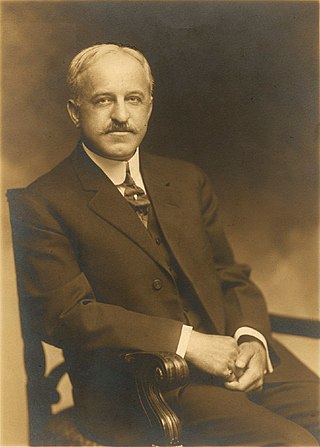
Samuel Henry Kress was a businessman, philanthropist, and founder of the S. H. Kress & Co. five and ten cent store chain. With his fortune, Kress amassed one of the most significant collections of Italian Renaissance and European artwork assembled in the 20th century. In the 1950s and 1960s, a foundation established by Kress would donate 776 works of art from the Kress collection to 18 regional art museums in the United States.
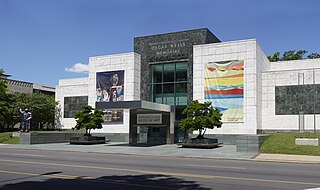
The Birmingham Museum of Art is a museum in Birmingham, Alabama. Its collection includes more than 24,000 paintings, sculptures, prints, drawings, and decorative arts representing various cultures, including Asian, European, American, African, Pre-Columbian, and Native American. The museum is also home to some Renaissance and Baroque paintings, sculptures,and decorative arts from the late 13th century to c. 1750.

The Museum of Fine Arts, Houston (MFAH), is an art museum located in the Houston Museum District of Houston, Texas. With the recent completion of an eight-year campus redevelopment project, including the opening of the Nancy and Rich Kinder Building in 2020, it is the 12th largest art museum in the world based on square feet of gallery space. The permanent collection of the museum spans more than 6,000 years of history with approximately 70,000 works from six continents.
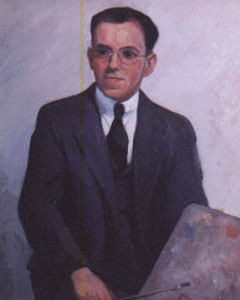
John Emil Berninger was an American landscape painter and Pennsylvania impressionist. He lived and painted in Allentown, Pennsylvania.
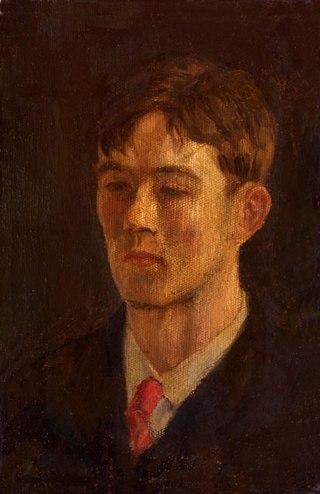
Walter Emerson Baum was an American artist and educator active in the Bucks and Lehigh County areas of Pennsylvania in the United States. In addition to being a prolific painter, Baum was also responsible for the founding of the Baum School of Art and the Allentown Art Museum.
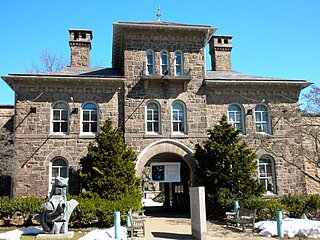
The Michener Art Museum is a private, non-profit museum that is located in Doylestown, Bucks County, Pennsylvania. Founded in 1988, it was named for the Pulitzer Prize–winning writer James A. Michener, a Doylestown resident.
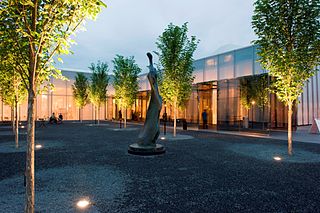
The North Carolina Museum of Art (NCMA) is an art museum in Raleigh, North Carolina. It opened in 1956 as the first major museum collection in the country to be formed by state legislation and funding. Since the initial 1947 appropriation that established its collection, the Museum has continued to be a model of enlightened public policy with free admission to the permanent collection. Today, it encompasses a collection that spans more than 5,000 years of artistic work from antiquity to the present, an amphitheater for outdoor performances, and a variety of celebrated exhibitions and public programs. The Museum features over 40 galleries as well as more than a dozen major works of art in the nation's largest museum park with 164-acres. One of the leading art museums in the American South, the NCMA recently completed a major expansion winning international acclaim for innovative approaches to energy-efficient design.

Pennsylvania Impressionism was an American Impressionist movement of the first half of the 20th century that was centered in and around Bucks County, Pennsylvania, particularly the town of New Hope. The movement is sometimes referred to as the "New Hope School" or the "Pennsylvania School" of landscape painting.

Memphis Brooks Museum of Art is an art museum in Memphis, Tennessee. The Brooks Museum, which was founded in 1916, is the oldest and largest art museum in the state of Tennessee. The museum is a privately funded nonprofit institution located in Overton Park in Midtown Memphis.

Hans Maler zu Schwaz (1480/1488–1526/1529) was a German painter born in Ulm and active as portraitist in the village of Schwaz, near Innsbruck. Maler may have trained with the German artist Bartholomäus Zeitblom, who was chief master of the School of Ulm between 1484 and 1517. He painted numerous portraits of members of the Habsburg court at Innsbruck as well as of wealthy merchants such as the Fuggers.
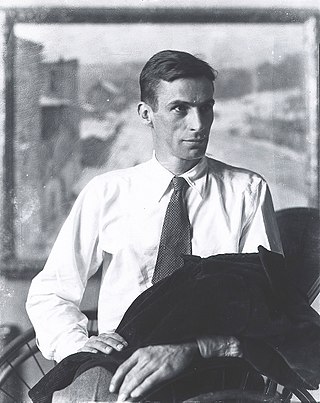
John Fulton "Jack" Folinsbee was an American landscape, marine and portrait painter, and a member of the art colony at New Hope, Pennsylvania. He is best known today for his impressionist scenes of New Hope and Lambertville, New Jersey, particularly the factories, quarries, and canals along the Delaware River.
Arlington Nelson Lindenmuth was an American landscape and portrait painter who lived and painted in Allentown, Pennsylvania and the Lehigh Valley region of the United States. He is a member of the Baum Circle, the group of artists either taught by, associated with, or directly influenced by Pennsylvania impressionist painter Walter Emerson Baum.
Peter Grippe was an American sculptor, printmaker, and painter. As a sculptor, he worked in bronze, terracotta, wire, plaster, and found objects. His "Monument to Hiroshima" series (1963) used found objects cast in bronze sculptures to evoke the chaotic humanity of the Japanese city after its incineration by atomic bomb. Other Grippe Surrealist sculptural works address less warlike themes, including that of city life. However, his expertise extended beyond sculpture to ink drawings, watercolor painting, and printmaking (intaglio). He joined and later directed Atelier 17, the intaglio studio founded in London and moved to New York at the beginning of World War II by its founder, Stanley William Hayter. Today, Grippe's 21 Etchings and Poems, a part of the permanent collection at the Davis Museum and Cultural Center at Wellesley College in Wellesley, Massachusetts, is available as part of the museum's virtual collection.
David Mickenherg is an American author, art professor and former museum director.
Francis James Quirk was an American artist, educator, museum curator, and TV personality. He is best known for his paintings of Edgar Lee Masters and Carl Sandberg, as well as his affiliation with Lehigh University as a professor and curator.

Portrait of a Young Woman or Bust of a Young Woman is a 1632 oil on canvas painting by Rembrandt, signed and dated by the artist.
Lehighton is a mural by the American painter Franz Kline.

The Standard Bearer is a three-quarter-length self-portrait by Rembrandt formerly in the Paris collection of Elie de Rothschild, and purchased by the Rijksmuseum for 175 million euros with assistance from the Dutch state and Vereniging Rembrandt in 2021. It was painted on the occasion of the artist's move from Leiden to Amsterdam and is seen as an important early work that "shows Rembrandt's ambition to paint a group portrait for the Amsterdam militia, at the time the most valued commission a painter could be awarded."


















